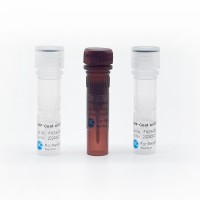Whole Human Brain Autoradiography of Serotonin Re-Uptake Inhibitors
互联网
409
Most of the autoradiography performed in human brain involves cutting sections from blocks of tissue or single hemispheres containing relevant areas. The resultant images are restricted to the particular region being studied and do not allow an overview of the plane in which the region is situated; hence, it is not always possible to make a direct comparison of binding in regions from different areas of the brain in the same image. Whole brain sections allow symmetrical measurements to be made from both hemispheres, and the visual image obtained may be compared with images obtained from Positron Emission Tomography (PET) scanning. The effects of unilateral lesion on receptors in the adjacent hemisphere may be determined, and the distribution of receptor sites affected by disease states can be mapped across the width of the brain to see if there is an asymmetrical pattern of receptor modification or loss.








